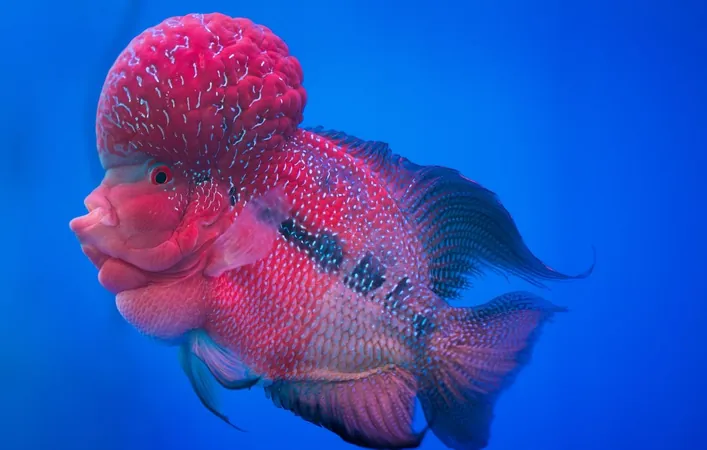
The Race for Evolution: Which Animals Are Evolving the Fastest?
2024-09-16
Author: Sarah
The Race for Evolution: Which Animals Are Evolving the Fastest?
Evolution, often thought to be a slow process unfolding over eons, can occur at astonishing speeds over just a few generations. A classic example is seen in Darwin’s finches of the Galapagos, which quickly adapted their beaks in response to shifting food sources. Similarly, green anoles have developed larger toe pads for climbing into safer habitats, while peppered moths changed from light to darker hues to better camouflage themselves against soot-darkened environments during the Industrial Revolution.
But which vertebrate species is currently evolving the fastest? This question raises debates among scientists who emphasize two main viewpoints. Michael Benton, a paleontologist from the University of Bristol, suggests there may be intrinsic factors that make some organisms more prone to rapid evolution than others. Alternatively, rapid evolutionary changes can arise in any species given significant environmental shifts—as catalysts for evolution.
Among contenders for the title of "fastest evolver," tuataras of New Zealand often lead the discussion. These lizard-like reptiles, the last remnants of the order Rhynchocephalia, are frequently dubbed "living fossils." Research published in 2008 revealed that tuataras have the highest-recorded rate of molecular evolution among vertebrates. Remarkably, their genetic structure has been evolving rapidly, while their physical form has remained stable for millions of years.
However, not everyone agrees on the evolutionary prowess of tuataras. Michael Lee from Flinders University points out that tuataras have not significantly altered anatomically, as they are well adapted to their environment, suggesting a different evolutionary approach.
Lee proposes that the cichlid fish inhabiting Lake Victoria are the true speedsters of evolution. This expansive, relatively young lake has witnessed the emergence of over 500 cichlid species in just 15,000 years. This process, known as adaptive radiation, allows one species to diversify rapidly into multiple forms to exploit various ecological niches. Cichlids have evolved to thrive in different water layers and substrate types, which supports their spectacular diversity.
One of the keys to the cichlids’ rapid evolution lies in their unique anatomical structure. Their second pair of jaws, known as pharyngeal jaws, allows them greater adaptability in feeding on diverse prey. Moreover, their reproductive strategies—highly selective mate choices—allow for the quick formation of new species and the ability to switch evolutionary directions by interbreeding with neighboring lineages.
Other noteworthy candidates include Trinidadian guppies, whose evolution in predator-free environments occurs at staggering rates measured in darwins— a unit for standard evolutionary measurement. Fast-paced urban adaptations are also on the rise. Species such as lizards in Miami are reportedly developing higher tolerances to cold, while several plant species are adjusting their flowering times in response to climate changes.
Experts like Lee emphasize that this period of rapid environmental change may lead to one of the fastest rates of evolution observed in history, highlighting the dual impact of extinctions and species adapting to human-led environmental shifts. As we stand at this pivotal moment of change, the evolutionary race among these remarkable animals takes on profound significance for the future of biodiversity on our planet.





 Brasil (PT)
Brasil (PT)
 Canada (EN)
Canada (EN)
 Chile (ES)
Chile (ES)
 Česko (CS)
Česko (CS)
 대한민국 (KO)
대한민국 (KO)
 España (ES)
España (ES)
 France (FR)
France (FR)
 Hong Kong (EN)
Hong Kong (EN)
 Italia (IT)
Italia (IT)
 日本 (JA)
日本 (JA)
 Magyarország (HU)
Magyarország (HU)
 Norge (NO)
Norge (NO)
 Polska (PL)
Polska (PL)
 Schweiz (DE)
Schweiz (DE)
 Singapore (EN)
Singapore (EN)
 Sverige (SV)
Sverige (SV)
 Suomi (FI)
Suomi (FI)
 Türkiye (TR)
Türkiye (TR)
 الإمارات العربية المتحدة (AR)
الإمارات العربية المتحدة (AR)